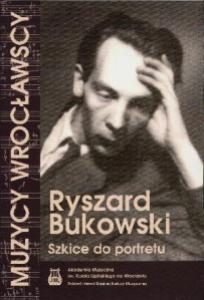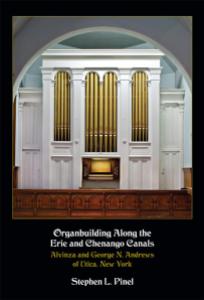In 2009 the Akademia Muzyczna im. Karola Lipińskiego in Wrocław launched Muzycy Wrocławscy, a series devoted to musicians of Wrocław and edited by Anna Granat-Janki. The inaugural volume, Ryszard Bukowski: Szkice do portretu, is dedicated to the composer, pedagogue, and publicist (1916–1987) who was one of the foremost leaders of postwar Polish culture. The volume collects papers presented at a conference held in 2007 at the Akademia commemorating the twentieth anniversary of Bukowski’s death; a table of contents in English is included.
Muzycy Wrocławscy
Comments Off on Muzycy Wrocławscy
Filed under 20th- and 21st-century music, New series
Na Píobairí Uilleann: Source
On 17 November 2010 Na Píobairí Uilleann launched Na Píobairí Uilleann: Source, an Internet resource that includes Irish music web tutors, Irish music collections dating back to 1724, reed-making and pipe-making videos, recitals, and historical data on iconic musicians.
While the site is specifically intended to support students of uilleann piping, pipe-making, and maintenance, it includes material of interest to players of other traditional instruments, traditional singers, and all lovers of Irish traditional music.
Source is a free collection; membership in Na Píobairí Uilleann enables use of organizational tools to create personal bookmarks and galleries. Content will be added regularly, and the site’s design provides for possible future enhancements such as the ability for members to upload and share their own content.
Many thanks to Patrick Hutchinson for bringing this to our attention! Below, Séamus Ennis plays Pat Ward’s jig on the uilleann pipes.
Comments Off on Na Píobairí Uilleann: Source
Filed under Ethnomusicology, Europe, Instruments, Resources
Dancecult: Journal of electronic dance music culture
The Centre for Cultural Studies Research at the University of East London launched Dancecult: Journal of electronic dance music culture (ISSN 1947-5403), a peer-reviewed, open-access e-journal, in 2009. The journal is a platform for interdisciplinary scholarship on the shifting terrain of electronic dance music cultures worldwide, including studies of emergent forms of electronic music production, performance, distribution, and reception.
The inaugural issue featured articles about rave, neotrance, psychedelia, DJ culture, and the concept of IDM (intelligent dance music). The journal is published biannually.
Filed under New periodicals, Popular music, Reception
OHS monographs in American organ history
In 2010 the Organ Historical Society Press launched its series OHS monographs in American organ history with Organbuilding along the Erie and Chenango Canals by Stephen L. Pinel. The book chronicles the careers of the organ builders Alvinza and George N. Andrews of Utica, New York, and their innovative use of the canals to undercut their Boston and New York competition in the late nineteenth and early twentieth centuries.
Sponsored by the Organ Historical Society, the Press also publishes a quarterly journal, an annual study of organs by locale, and CDs featuring historic American instruments.
Comments Off on OHS monographs in American organ history
Filed under Instruments, New series
Vexing the pianist
For an experiment involving both acoustical and MIDI data, the German pianist Armin Fuchs made an uninterrupted recording of Satie’s Vexations, fulfilling the composer’s apparent indication that the piece should be repeated 840 times; the performance lasted nearly 28 hours.
Tempo and loudness remained stable over the first 14 hours of alertness; after 15 hours a state of trance ensued, resulting in a destabilization of tempo followed by uncontrolled deviations in loudness.
This according to “Tempo and loudness analysis of a continuous 28-hour performance of Erik Satie’s composition Vexations” by Reinhard Kopiez, Marc Bangert, Werner Goebl, and Eckart Altenmüller (Journal of new music research XXXII/3 [September 2003], pp. 243–258).
 Above, the full text of Satie’s composition. The official Satie website, which includes rare film footage, is here.
Above, the full text of Satie’s composition. The official Satie website, which includes rare film footage, is here.
Below, a brief exposition of the work.
Comments Off on Vexing the pianist
Filed under 20th- and 21st-century music, Curiosities, Performance practice, Science
Sephardic music: A century of recordings
Sephardic music: A century of recordings showcases and discusses over 100 years of recorded Sephardic music, from the 78 rpm era to the present. Created by Joel Bresler, this resource includes information on repertory and performance practice and a comprehensive discography of Sephardic 78s in Hebrew and Ladino ordered by label, song, or artist. Numerous illustrations are provided, including reproductions of record labels and covers.
Above, the label from Haim Effendi’s 1907 recording of the popular Sephardic song A la una; the recording can be heard here.
Comments Off on Sephardic music: A century of recordings
Filed under Europe, Resources, World music
Organ: Žurnal ob organnoj kul´ture
The Russian-speaking organ community has a new platform for professional information and dialogue on organ culture in Russia and abroad: the quarterly periodical Орган: Журнал об органной культуре (Organ: Journal of organ culture). Launched in 2009 by the Московское Музыкальное Общество (Moscow Musical Society) , the Гocударственный Центральный Музей Музыкальной Культуры им. М.И. Глинки (Glinka State Central Museum of Musical Culture), and Союз Московских Композиторов (Moscow Composers’ Union), the journal is published by Стейдж-Мастер/Stage Master with assistance from Le chant du monde.
Organ is published in Russian with a collective summary in English; it is edited by the musicologist, organist, and pedagogue Evgeniâ Krivickaâ. Introducing instruments from around the world with specifications and photographs, and providing interviews and reports on organ events, the journal addresses a wide range of readers, from organists and organ builders to students and teachers, and everyone interested in organ music.
Comments Off on Organ: Žurnal ob organnoj kul´ture
Filed under Instruments, New periodicals
Waiting for qi
Houqi (waiting for qi) was a technique employed by Chinese authorities in the fourteenth century to determine the onset of spring by measuring the emanations of qi, the active principal of life. A set of standard pitchpipes, each corresponding to a specific calendar period, was filled with ashes and buried in a sealed chamber; when the sun entered the second two-week period of a given month the seminal force of qi was supposed to rise and expel the ashes from the pipe that matched the calendar period.
Unfortunately, the method failed to produce the desired results, and a great deal of discussion over the millennia as to what kind of soil to use, where to place the pitchpipes, and so on, failed to improve it. Ultimately the great music theorist Zhu Zaiyu (朱載堉, 1536–1611) criticized houqi as a poor example of scientific method.
This according to “Origins of the controversy over the houqi method (候气法疑案之发端)” by Tang Jikai (唐继凯) in Jiaoxiang: Journal of Xi’an Conservatory of Music (交响:西安音乐学院学报), vol. 22, no. 3:101 (fall 2003), pp. 27–31. Above, a calligrapher’s rendition of the Chinese character for qi.
Comments Off on Waiting for qi
Filed under Asia, Curiosities, Instruments, Nature, Science
Folkstreams
Folkstreams is an archive of hard-to-find documentary films about traditional cultures that gives them new life by streaming them on the Internet. Founded in 2002 by the filmmakers Tom and Mimi Davenport, the idea grew out of “our love of filmmaking, a respect for the traditional culture of ordinary Americans, and a desire to get our work to the general public.”
Partnering with Ibiblio, the School of Information and Library Science, and the Southern Folklife Collection, all based at the University of North Carolina at Chapel Hill, Folkstreams preserves and disseminates priceless historical documents, including many whose subjects are music and dance.
Above, the Landis family of Granville County, North Carolina, sings “Jezebel” in A singing stream: A black family chronicle (Tom Davenport, 1986).
Related post: Pete Seeger, filmmaker
Filed under Ethnomusicology, North America, Resources
Rediscovering sonoristics
When he coined the term sonorystyka in the 1950s, Józef Michał Chomiński (1906–94) considered sonoristics a new branch of study centered on the sound technique of a composition. Discernible as early as certain works by Debussy, sonoristics involves a whole new layer of a musical work that emphasizes its actual sound, transcending older approaches in which structural elements were considered independently of their sonorous realization.
Among his expositions of his sonoristic theories, Chomiński showed how the first six measures of Webern’s Die Sonne (op. 14, no. 1) present no traces of melody or harmony in the traditional sense; rather, they embody a full transformation of both concepts into a sonic universe regulated by timbre, rhythm, and register contrasts.
This according to “Rediscovering sonoristics: A groundbreaking theory from the margins of musicology” by Zbigniew Granat, an essay included in our recently published Music’s intellectual history. Below, a performance of Webern’s op. 14; Chomiński’s example begins the set.
Comments Off on Rediscovering sonoristics
Filed under 20th- and 21st-century music, Theory












